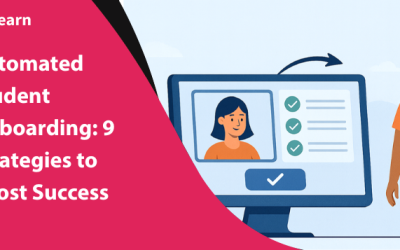How To Build An peer-to-peer Online Mentoring Platform
Peer-peer mentoring is becoming commonplace in our ever-changing digital world. And more than face-to-face mentoring, the rising trend is virtual peer-peer mentoring, which is more effective.
With the ease of mentoring platforms, most of the population now adjusted to video-calling and virtual mentoring. Peer-peer virtual mentoring can be impactful if it’s well planned and managed and both the mentee and mentor are on the same page.
What is a peer-to-peer mentoring
Peer-peer mentoring is mentoring sessions that offer training to learners or support remote teams, creating community and tackling issues related to a subject or beyond that.
When it comes to virtual mentoring, the only difference is that the sessions take place over a phone or video call instead of in person.
Advantages and disadvantages of peer-peer virtual mentoring
A peer-peer virtual mentoring is an excellent way to bypass the location barrier and build valuable mentorships. Virtual mentoring involves communication via phone, email, or even web chat during one-to-one mentoring sessions.
Now let’s look into the advantages of peer-peer virtual mentoring:
Two-way knowledge transfer
In peer-peer mentoring, there is a two-way knowledge transfer between the mentee and the mentors, which creates a knowledge flow between different cultures and skill levels.
Flexible meetings
Virtual mentoring supports flexible meeting times, which is perfect for the busy schedules all everyone involved in peer-peer mentoring.
Larger pools of people
Peer-peer mentoring platforms allow large pools of people who interact with each other. This provides a larger field of knowledge and also gives you many advocates who can support your virtual mentoring.
Good exposure for participants
Both mentors and mentees who are in different places come together to learn from each other. This helps the members involved to be exposed to new cultures, practices, and ideas.
Cons of peer-peer mentoring
Now as we have talked about the immense benefits of peer-peer mentoring, there are some challenges when compared to traditional mentoring.
But these challenges can be overcome with the right peer-peer mentoring platform that helps you prepare and tackle the challenges.
Communication challenges
Peer-peer virtual mentoring lacks in terms of direct communication, where you tend to miss out on body language. Participants can overcome the challenges using efficient video chat communication. This helps to formalize the program and allows mentors to interact with participants directly and watch their facial expressions.
Different time zones
In a virtual peer-peer mentoring program, the participants would be located in different places meaning the time zones will also be different. Effective times can be chosen to maximize the interactions to overcome the time zone challenges.
If you build a peer-per-virtual mentoring platform, you can implement features that automatically convert time zones so that mentors and mentees can view the time of each other in their own local timings.
Technology problems
Technology failures are common and can happen anytime when it comes to technology and virtual platforms. Technology issues cannot always be prevented, but you can be prepared and find alternatives. During technology failures, you can rely on phone calls and email to continue communication.
Building an Online mentoring platform
Starting a peer-peer online mentoring platform requires careful planning and preparation for success. There are lots of virtual mentoring platforms out there, meaning the competition is really high.
Start with a business plan to plan how your virtual mentoring platform would work. Set the USPs to differentiate your service from your competitors. Performing market research will help you understand the needs of your target audience so that you can design the features and functionalities of your mentoring platform accordingly.
So here are the steps to follow to build an online mentoring platform:
Set goals for your virtual mentoring service
To begin with, it is important to set goals for your virtual mentoring programs that help the members to focus on their interactions.
Some of the goals for virtual mentoring programs include
- Skill development
Your target audience might be looking to grasp new skills and knowledge to advance in their careers
- Networking
Both mentor and mentee must focus on expanding the networks through a group mentoring experience.
- Reputation
Mentors can grow their reputation as strong advisors within the mentoring programs
- Understanding new perspectives
Any peer-per mentoring program involves expanding their horizons as the groups interact with people of different backgrounds, cultures, and perspectives.
- Find mentees
For mentors or online coaches who don’t have a large client base or none at all, the next step is to find ideal participants for your mentoring programs. To get started, you need a pool of mentees to run your programs.
Here is how you can bring new participants to your programs:
Emails
Send out email notifications to your inner circle to announce the launch of your virtual mentoring platform. Make sure you highlight the advantages of participation so that people can understand what they can gain.
Social media
Social media is a great way to announce the launch of your online mentoring platform, as you will see most of your audience will hang out there. Create special posters and teasers on social media to let your audience know about your venture.
Set expectations for the group
When starting an online mentoring platform, you must set expectations for the group to let them know about the guidelines and the expected behavior inside the platform.
So here are a few exceptions you can set for your group:
Meeting frequency: The regular schedule of meetings that works for all members.
Giving feedback: Teach people how they can constructively offer honest feedback.
Prepare for the meetings: Encourage participants to do the pre-work before the sessions so that the interactions can be productive and fruitful to the maximum.
Confidentiality: Every peer-peer virtual mentoring platform needs a certain level of confidentiality and trust among participants, mentors, and mentees. This helps mentees interact with each other and raise concerns they might be reluctant to discuss.
Create lessons for each session
Before running online mentoring programs, you must decide on the topics to teach or discuss for every class or online session. Mix up lessons in the forms of text-based lessons, video classes, self-paced online courses, quizzes, PDFs, infographics, etc., to make it interactive and engaging for mentees.
Use the best tutoring software for your online mentoring platform
Having an online mentoring platform that is fully functional and interactive can help people connect with each other with the intuitive video chat feature and breakout rooms.
Activities in an online mentoring platform include conducting online sessions, asking questions, interactive sessions, sharing files and data, and more.
But how to create an online mentoring platform with the latest interactive and engaging features? That is where an online tutoring software like Pinlearn can help you with.
The self-hosted tutoring software with live classes and self-paced courses comes with 100% customization powers and owners.
Pinlearn comes with excellent features like:
- Course management for peer-peer mentoring.
- Live tutoring sessions.
- Different time zone management.
- Tutor and student management or mentors and mentees.
- Unique marketing features.
- Internal messaging system and more
Conclusion
A shift from traditional face-to-face communication might feel abrupt and challenging. But it is an essential transition. You can set up yourself or your organization for success by implementing a peer-peer virtual platform. Give us a chance today to assist you and offer guidance to build your peer-peer virtual mentoring platform to fast-track your growth.





